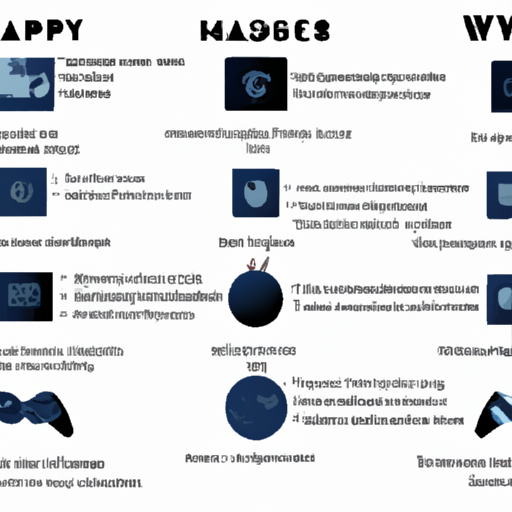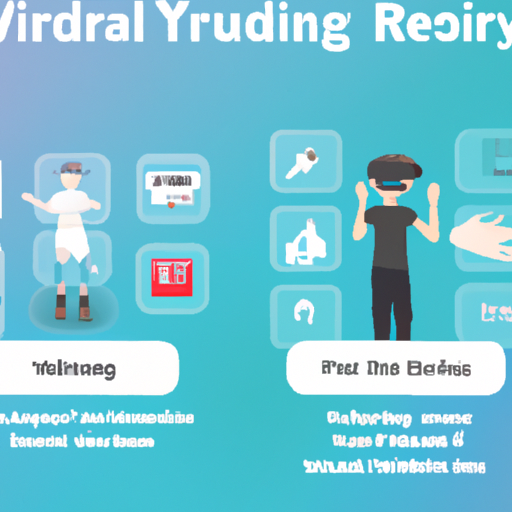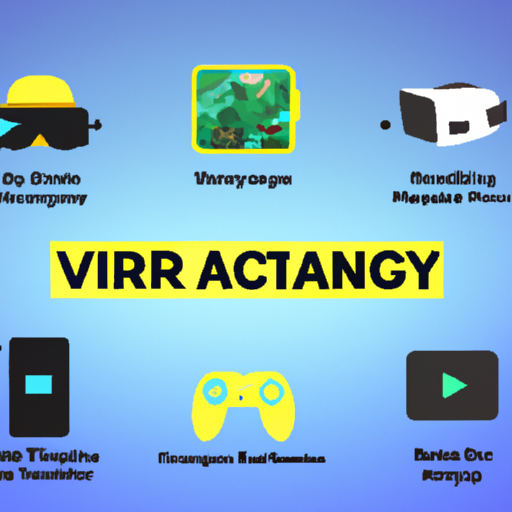-
Table of Contents
“Unlock the Power of Virtual and Augmented Reality with the Best Development Tools and Platforms.”
Introduction
Virtual Reality (VR) and Augmented Reality (AR) development tools and platforms have revolutionized the way we create and experience digital content. From gaming to education, these tools and platforms have enabled developers to create immersive and interactive experiences that were previously impossible. Popular tools and platforms such as Unity, Unreal Engine, and Vuforia have made it easier than ever to create and deploy VR and AR applications. With these tools, developers can create realistic 3D environments, add interactive elements, and create engaging experiences for users. With the increasing popularity of VR and AR, these tools and platforms are becoming more powerful and accessible, allowing developers to create more complex and immersive experiences.
Understanding the Pros and Cons of Different VR/AR Development Platforms
Virtual Reality (VR) and Augmented Reality (AR) are rapidly growing technologies that are being used in a variety of industries. As the demand for these technologies increases, so does the need for development platforms that can help create immersive experiences. There are a variety of platforms available, each with their own advantages and disadvantages. It is important to understand the pros and cons of each platform in order to make an informed decision when selecting a platform for your project.
Unity is one of the most popular VR/AR development platforms. It is a powerful and versatile engine that can be used to create a wide range of experiences. One of the main advantages of Unity is its ease of use. It has a user-friendly interface and a wide range of tutorials and resources to help developers get started. Additionally, Unity is highly scalable, meaning it can be used to create experiences for a variety of platforms, including mobile, desktop, and console.
However, Unity does have some drawbacks. It is not the most cost-effective platform, as it requires a subscription to access the full range of features. Additionally, Unity is not the most powerful engine, so it may not be suitable for more complex projects.
Unreal Engine is another popular VR/AR development platform. It is a powerful engine that is capable of creating high-quality experiences. One of the main advantages of Unreal Engine is its scalability. It can be used to create experiences for a variety of platforms, including mobile, desktop, and console. Additionally, Unreal Engine is highly customizable, allowing developers to create unique experiences.
However, Unreal Engine does have some drawbacks. It is not the most user-friendly platform, as it requires a certain level of technical knowledge to use. Additionally, Unreal Engine is not the most cost-effective platform, as it requires a subscription to access the full range of features.
Finally, there is the Vuforia platform. Vuforia is a powerful AR development platform that is designed specifically for creating AR experiences. One of the main advantages of Vuforia is its ease of use. It has a user-friendly interface and a wide range of tutorials and resources to help developers get started. Additionally, Vuforia is highly scalable, meaning it can be used to create experiences for a variety of platforms, including mobile, desktop, and console.
However, Vuforia does have some drawbacks. It is not the most powerful engine, so it may not be suitable for more complex projects. Additionally, Vuforia is not the most cost-effective platform, as it requires a subscription to access the full range of features.
In conclusion, there are a variety of VR/AR development platforms available, each with their own advantages and disadvantages. It is important to understand the pros and cons of each platform in order to make an informed decision when selecting a platform for your project.
How to Get Started with VR/AR Development Using Unity
Virtual Reality (VR) and Augmented Reality (AR) are two of the most exciting and rapidly growing areas of technology. With the help of Unity, developers can create immersive and interactive experiences for users. Unity is a powerful game engine that provides a comprehensive set of tools for creating interactive 3D and 2D experiences. In this article, we will discuss how to get started with VR/AR development using Unity.
The first step is to download and install Unity. Unity is available for free on the Unity website. Once installed, you will need to create a new project. When creating a new project, you will need to select the type of project you want to create. For VR/AR development, you will need to select the “Virtual Reality” or “Augmented Reality” option.
Once the project is created, you will need to configure the project settings. This includes setting up the camera, input, and other settings. You will also need to add the appropriate SDKs for the platform you are targeting. For example, if you are targeting the Oculus Rift, you will need to add the Oculus SDK.
Once the project is configured, you will need to create the scene. This includes adding the environment, objects, and other elements. You can use the Unity editor to create the scene or you can use a 3D modeling program such as Blender.
Once the scene is created, you will need to add the scripts and logic to make the scene interactive. This includes adding the code to handle user input, physics, and other elements. You can use the Unity editor to write the code or you can use a scripting language such as C#.
Finally, you will need to build and deploy the project. This includes creating the executable file and deploying it to the target platform. You can use the Unity editor to build the project or you can use a build tool such as Jenkins.
By following these steps, you can get started with VR/AR development using Unity. With the help of Unity, developers can create immersive and interactive experiences for users.
An Overview of the Latest VR/AR Development Tools and Platforms
Virtual Reality (VR) and Augmented Reality (AR) are two of the most exciting and rapidly developing technologies of the 21st century. As the technology continues to evolve, so do the development tools and platforms available to create and deploy VR and AR experiences. In this article, we will provide an overview of the latest VR/AR development tools and platforms.
One of the most popular development tools for VR and AR is Unity. Unity is a cross-platform game engine that enables developers to create interactive 3D experiences for a variety of platforms, including mobile, desktop, and console. Unity is a powerful tool for creating immersive VR and AR experiences, and it is used by many of the leading developers in the industry.
Another popular development tool is Unreal Engine. Unreal Engine is a powerful game engine that enables developers to create high-quality 3D experiences for a variety of platforms. It is used by many of the leading developers in the industry, and it is a great tool for creating immersive VR and AR experiences.
The Vuforia platform is another popular development tool for creating VR and AR experiences. Vuforia is a platform that enables developers to create interactive 3D experiences for a variety of platforms, including mobile, desktop, and console. It is used by many of the leading developers in the industry, and it is a great tool for creating immersive VR and AR experiences.
The Google ARCore platform is another popular development tool for creating VR and AR experiences. ARCore is a platform that enables developers to create interactive 3D experiences for a variety of platforms, including mobile, desktop, and console. It is used by many of the leading developers in the industry, and it is a great tool for creating immersive VR and AR experiences.
Finally, the Apple ARKit platform is another popular development tool for creating VR and AR experiences. ARKit is a platform that enables developers to create interactive 3D experiences for a variety of platforms, including mobile, desktop, and console. It is used by many of the leading developers in the industry, and it is a great tool for creating immersive VR and AR experiences.
In conclusion, there are a variety of development tools and platforms available for creating immersive VR and AR experiences. Unity, Unreal Engine, Vuforia, Google ARCore, and Apple ARKit are some of the most popular development tools and platforms for creating VR and AR experiences. Each of these tools and platforms has its own unique features and capabilities, and developers should choose the one that best suits their needs.
Exploring the Benefits of Unity for VR/AR Development
Virtual reality (VR) and augmented reality (AR) are two of the most exciting and rapidly growing technologies of the 21st century. As these technologies become more widely adopted, developers are looking for ways to make the development process easier and more efficient. Unity is a powerful game engine that is increasingly being used for VR and AR development. This article will explore the benefits of using Unity for VR/AR development.
One of the primary benefits of using Unity for VR/AR development is its ease of use. Unity is designed to be user-friendly, with a simple drag-and-drop interface that makes it easy to create complex 3D environments. Additionally, Unity offers a wide range of tutorials and resources to help developers get up to speed quickly. This makes it an ideal platform for developers of all skill levels.
Another benefit of using Unity for VR/AR development is its scalability. Unity is designed to be highly scalable, allowing developers to create projects of any size and complexity. This makes it an ideal platform for creating large-scale projects such as virtual worlds or augmented reality experiences.
Unity also offers a wide range of features that make it well-suited for VR/AR development. For example, Unity supports a variety of 3D formats, allowing developers to easily import 3D models and textures into their projects. Additionally, Unity offers a range of tools for creating interactive experiences, such as physics engines and animation tools.
Finally, Unity is an open-source platform, meaning that developers can access the source code and modify it to suit their needs. This makes it easy to customize projects and create unique experiences.
In conclusion, Unity is an ideal platform for VR/AR development due to its ease of use, scalability, and range of features. Its open-source nature also makes it highly customizable, allowing developers to create unique experiences. For these reasons, Unity is an increasingly popular choice for VR/AR development.
Conclusion
In conclusion, VR/AR development tools and platforms have revolutionized the way we create and experience virtual and augmented reality. These tools and platforms have made it easier than ever to create immersive and interactive experiences, and have opened up a world of possibilities for developers and users alike. With the continued development of these tools and platforms, the possibilities for VR/AR applications are only going to increase, and the future of virtual and augmented reality looks brighter than ever.




